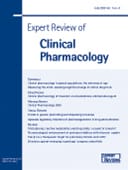 “Extensive basic science research has identified the potential therapeutic benefits of active compounds extracted from the Cannabis sativa L. plant (the cannabinoids). It is recognized that a significant proportion of patients suffering with the debilitating symptoms of pain and spasticity in multiple sclerosis or other conditions smoke cannabis despite the legal implications and stigma associated with this controlled substance. GW Pharmaceuticals have developed Sativex (GW- 1000-02), a combined cannabinoid medicine that delivers and maintains therapeutic levels of two principal cannabinoids, delta-9-tetrahydrocannabinol (THC) and cannabidiol (CBD), via an oromucosal pump spray, that aims to minimize psychotropic side effects.” https://www.ncbi.nlm.nih.gov/pubmed/16969427
“Extensive basic science research has identified the potential therapeutic benefits of active compounds extracted from the Cannabis sativa L. plant (the cannabinoids). It is recognized that a significant proportion of patients suffering with the debilitating symptoms of pain and spasticity in multiple sclerosis or other conditions smoke cannabis despite the legal implications and stigma associated with this controlled substance. GW Pharmaceuticals have developed Sativex (GW- 1000-02), a combined cannabinoid medicine that delivers and maintains therapeutic levels of two principal cannabinoids, delta-9-tetrahydrocannabinol (THC) and cannabidiol (CBD), via an oromucosal pump spray, that aims to minimize psychotropic side effects.” https://www.ncbi.nlm.nih.gov/pubmed/16969427
“Sativex has proved to be well tolerated and successfully self-administered and self-titrated in both healthy volunteers and patient cohorts. Clinical assessment of this combined cannabinoid medicine has demonstrated efficacy in patients with intractable pain (chronic neuropathic pain, pain due to brachial plexus nerve injury, allodynic peripheral neuropathic pain and advanced cancer pain), rheumatoid arthritis and multiple sclerosis (bladder problems, spasticity and central pain), with no significant intoxication-like symptoms, tolerance or withdrawal syndrome.” https://journals.prous.com/journals/servlet/xmlxsl/pk_journals.xml_summaryn_pr?p_JournalId=4&p_RefId=1021517
“Sativex(®) (nabiximols, USAN name) oromucosal spray contains the two main active constituents of Cannabis sativa, tetrahydrocannabinol and cannabidiol in a 1:1 molecular ratio, and acts as an endocannabinoid system modulator.” https://www.ncbi.nlm.nih.gov/pubmed/21449855






.jpeg)


